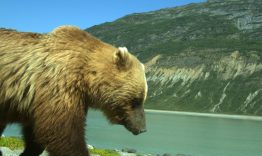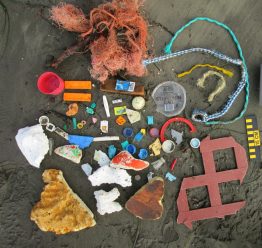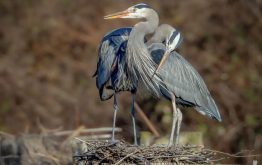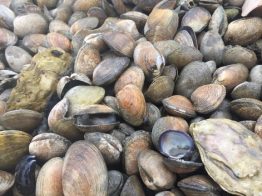People often visit U.S. national parks to catch a glimpse of wildlife. But how does our presence impact the animals we hope to see? National park traffic has grown steadily over the past decade, and popular parks like Yosemite and Yellowstone can easily see over a million visitors a year. In these heavily used areas, one might expect animals to change their behavior to avoid humans.
Read more at UW News »Beach trash accumulates in predictable patterns on Washington and Oregon shores
Citizen scientists recorded trash on Pacific Northwest beaches, from southern Oregon to Anacortes, Washington, to contribute to the growing study of marine trash. A study by the University of Washington analyzed 843 beach surveys and found that certain beaches, and certain areas of a single beach, are “sticky zones” that accumulate litter. The study was published online Aug. 11 in Marine Pollution Bulletin.
Read more at UW News »An 85-year-old fishing club’s records reveal the secrets of Puget Sound salmon
Few people would consider launching a boat into Seattle’s Elliott Bay on a winter morning. It’s cold, dark, and more often than not, wet. But the steadfast members of Seattle’s Tengu Club, a Japanese American fishing club that held its first annual salmon derby in 1946, can reliably be found doing just that. In the 85 years since it was founded, participants have gathered on the shores of West Seattle each winter to reconnect and fish for resident Puget Sound Chinook salmon, also known as blackmouth because of their dark-colored gums.
Read more »Bird behavior influenced by human activity during COVID-19 lockdowns
A new University of Washington study led by Olivia Sanderfoot reports that many birds were just as likely to be found in highly developed urban areas as they were in less-developed green spaces during the peak of the COVID-19 lockdowns. The paper was published Aug. 11 in the journal Scientific Reports. “Our findings suggest that some birds may have been able to use more spaces in cities because our human footprint was a little lighter,” said Sanderfoot, who completed the study as a doctoral researcher in the UW School of Environmental and Forest Sciences and is now a postdoctoral scholar in the Department of Ecology and Evolutionary Biology at the University of California, Los Angeles.
Read more at UW News »Whodunnit? Uncovering the mystery of a tiny toxin killing shellfish in Puget Sound
Around 50 years ago, Pacific oysters in the Puget Sound started dying at noticeably increasing rates during the summer, causing residents and scientists to wonder why. Researchers in what is now the School of Aquatic and Fishery Sciences investigated many factors that may cause mortalities such as bacteria, reproductive stress related to spawning and changes in other environmental conditions. The evidence collected pointed towards stress on the animals when they spawn, as the Pacific oyster spends a lot of their energy on reproduction.
Read more »





